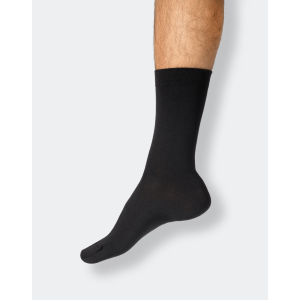Understanding Athlete's Foot: Causes, Symptoms, Treatment and Prevention


We bring you the best ways to deal with an infection that can be very annoying.
Athlete's foot, also known as tinea pedis, is a common fungal infection that affects the feet. It is caused by a group of fungi called dermatophytes, which live on the dead tissues of the skin, hair, and nails.
Causes of Athlete's Foot
Athlete's foot is typically caused by walking barefoot in damp, public areas, such as pools, showers, and locker rooms. The fungi that cause athlete's foot thrive in warm, moist environments, so these public areas provide the perfect conditions for the fungi to grow.
In addition to walking barefoot in damp areas, other risk factors for athlete's foot include:
- Having a weakened immune system
- Wearing tight, closed-toe shoes that do not allow for proper ventilation
- Having a skin condition, such as eczema, that makes the skin more susceptible to infection
- Sharing towels, shoes, or other personal items with someone who has athlete's foot
Symptoms of Athlete's Foot
Athlete's foot can cause a range of symptoms, including:
- Itching, burning, and redness between the toes
- Dry, flaky, or scaly skin on the feet
- Blisters or sores on the feet
- Thickened or cracked skin on the soles of the feet
- Foul-smelling odor from the feet
Treatment of Athlete's Foot
Athlete's foot can usually be treated with over-the-counter antifungal creams, ointments, or sprays. These medications can be applied directly to the affected areas of the feet to kill the fungi and prevent the infection from spreading.
In some cases, oral antifungal medications may be necessary to treat severe or recurrent cases of athlete's foot. These medications are taken by mouth and can be used to treat the infection from within.
Preventing Athlete's Foot
To prevent athlete's foot, it's important to take good care of your feet and avoid exposing them to damp public areas. Here are some tips for preventing athlete's foot:
- Wear sandals or flip-flops in public showers and locker rooms.
- Keep your feet clean and dry, especially between your toes.
- Wear socks made from moisture-wicking materials to help keep your feet dry. At Antipress we have developed the thinnest therapeutic sock that is made to wick away sweat and water quickly, making it a perfect choice for people suffering from Athlete’s Foot.
- Change your socks daily and wash them with hot water and laundry detergent to kill any fungi.
- Avoid sharing towels, shoes, or other personal items with others.
- Use antifungal powders on your feet to help prevent the growth of fungi.
- Avoid wearing tight, closed-toe shoes that do not allow for proper ventilation.
By following these tips, you can help prevent athlete's foot and keep your feet healthy and free from infection.



